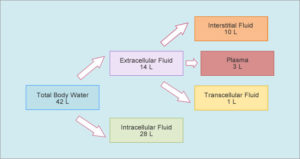

K m/w = partition coefficient of the drug between the lipoidal membrane and the aqueous GI fluids (no units) It also represents the rate of appearance of drug in bloodĭ = diffusion coefficient of the drug through the membrane (area/time)Ī = surface area of the absorbing membrane for drug diffusion (area) It can be mathematically expressed by the following equation:ĭQ/dt = rate of drug diffusion (amount/time). Passive diffusion is best expressed by Fick’s first law of diffusion, which states that the drug molecules diffuse from a region of higher concentration to one of lower concentration until equilibrium is attained and that the rate of diffusion is directly proportional to the concentration gradient across the membrane. During passive diffusion, the drug present in the aqueous solution at the absorption site partitions and dissolves in the lipid material of the membrane and finally leaves it by dissolving again in an aqueous medium, this time at the inside of the membrane. Since no energy source is required, the process is called as passive diffusion. Drug movement is a result of the kinetic energy of molecules. It is defined as the difference in the drug concentration on either side of the membrane. The driving force for this process is the concentration or electrochemical gradient. Passive DiffusionĪlso called non-ionic diffusion, it is the major process for absorption of more than 90% of the drugs. Illustrative comparison of transcellular, paracellular and vesicular transport. compares transcellular, paracellular and vesicular transport mechanisms.įig. Vesicular transport of drugs can be classed into two categories –įigure 2.3. Since the mechanism involves transport across the cell membrane, the process can also be classified as transcellular. Vesicular or Corpuscular Transport (Endocytosis) – Like active transport, these are also energy dependent processes but involve transport of substances within vesicles into a cell. Vesicular or Corpuscular Transport (Endocytosis) Paracellular transport differs from pore transport in that the former involves transfer of drug across epithelium and through the cellular junctions whereas in the case of latter, the molecules are transferred from outside of the epithelial cell into the cell through pores present in the cell membrane.Ĭ. Persorption – is permeation of drug through temporary opening s formed by shedding of two neighbouring epithelial cells into the lumen. Compounds such as insulin and cardiac glycosides are taken up this mechanism.Ģ. Permeation through tight junctions of epithelial cells – this process basically occurs through openings which are little bigger than the aqueous pores. The two paracellular transport mechanisms involved in drug absorption are –ġ. This pathway is of minor importance in drug absorption. Paracellular/Intercellular Transport – is defined as the transport of drugs through the junctions between the GI epithelial cells. Secondary active transport – this process is further subdivided into two – Active Transport Processes – This transport process requires energy from ATP to move drug molecules from extracellular to intracellular milieu. Passive transport processes can be further classified into following types –Ģ. Passive Transport Processes – These transport processes do not require energy other than that of molecular motion (Brownian motion) to pass through the lipid bilayer.

The various transcellular transport processes involved in drug absorption are –ġ. (iii) Permeation of the lateral or basolateral membrane- this is of secondary importance. (ii) Movement across the intracellular space (cytosol). (i) Permeation of GI epithelial cell membrane, a lipoidal barrier – this is the major obstacle to drug absorption. The 3 steps involved in transcellular transport of drugs are – It is the most common pathway for drug transport. Transcellular/Intracellular Transport – is defined as the passage of drugs across the GI epithelium. The three broad categories of drug transport mechanisms involved in absorption are –


 0 kommentar(er)
0 kommentar(er)
